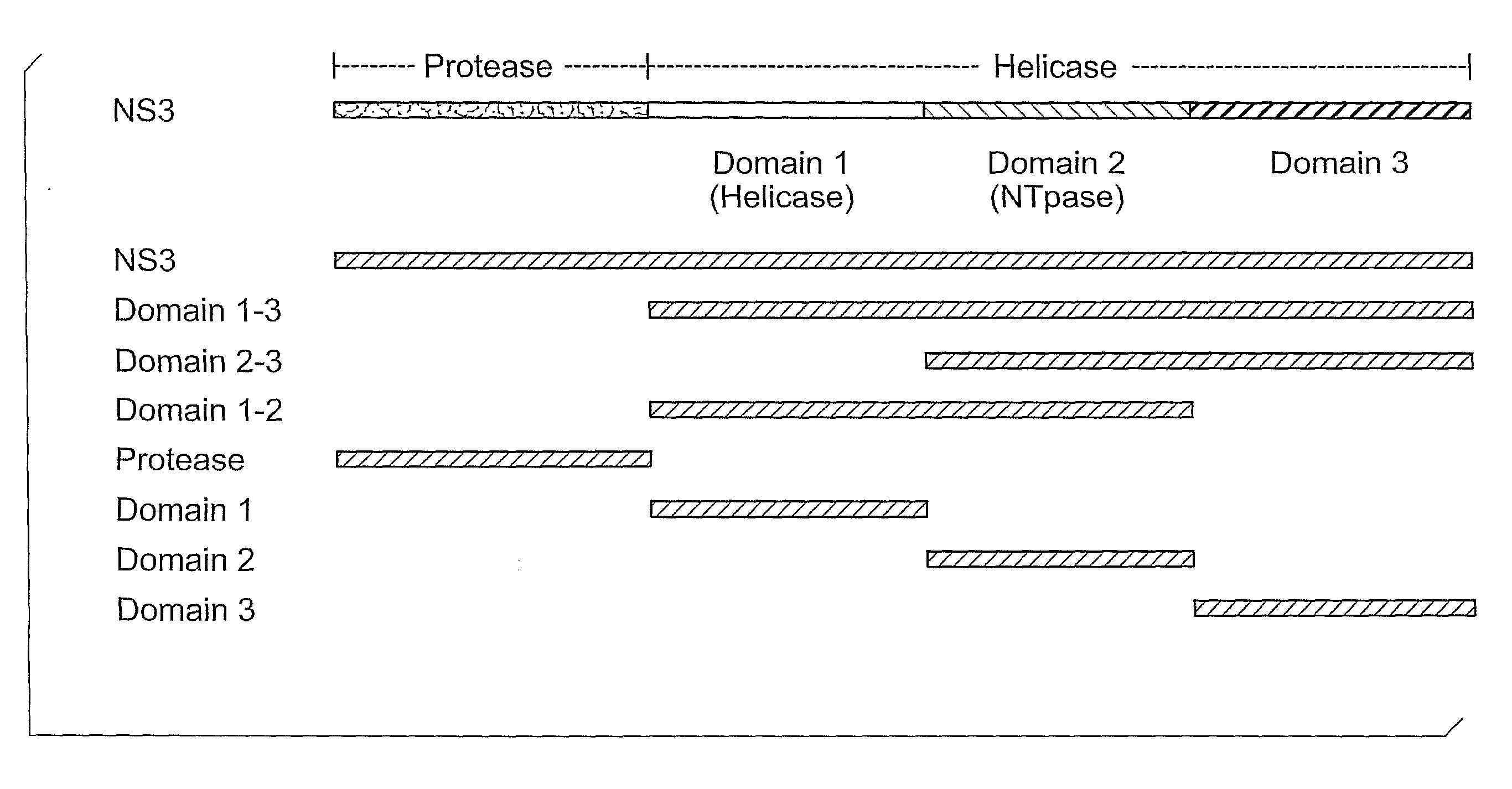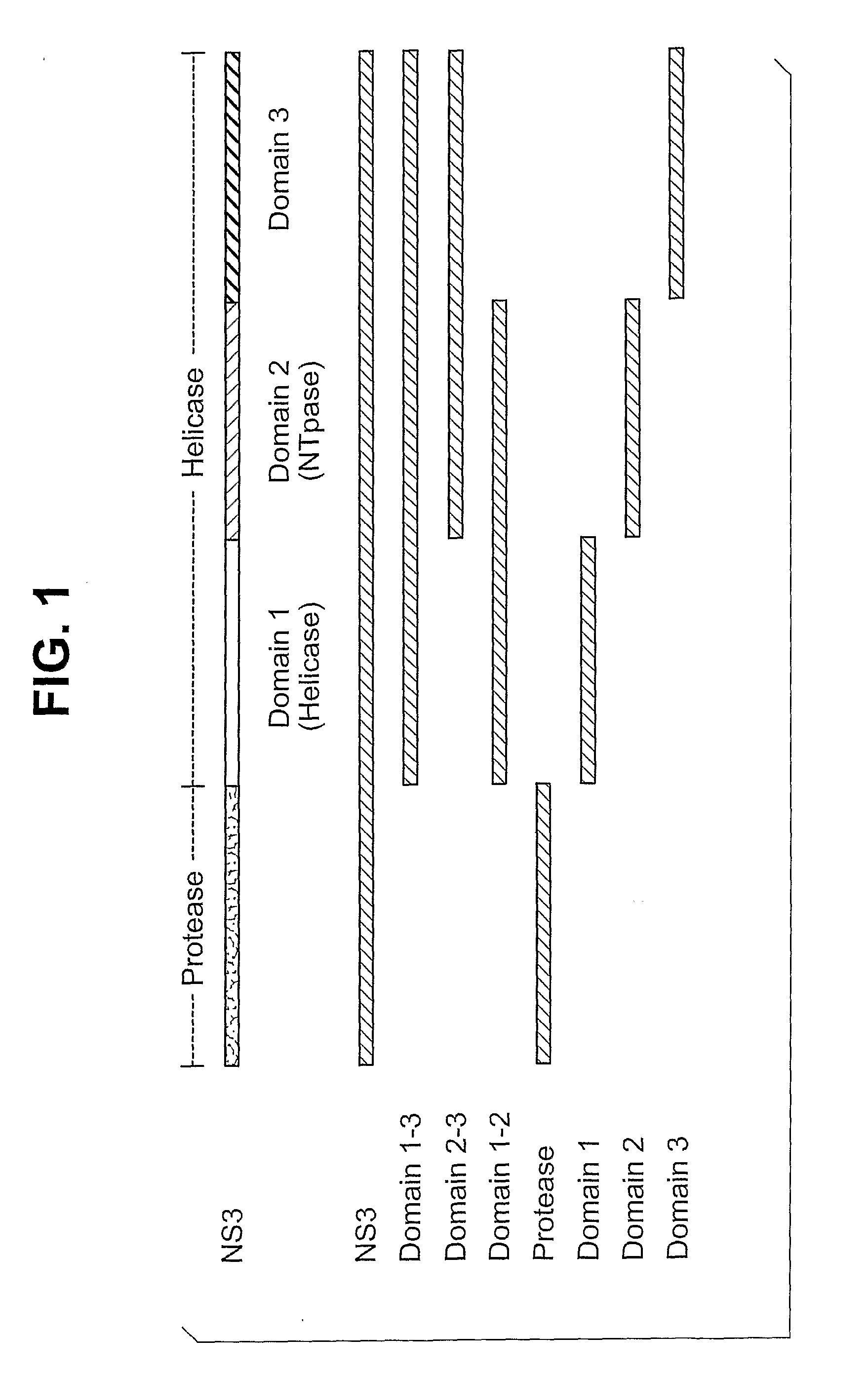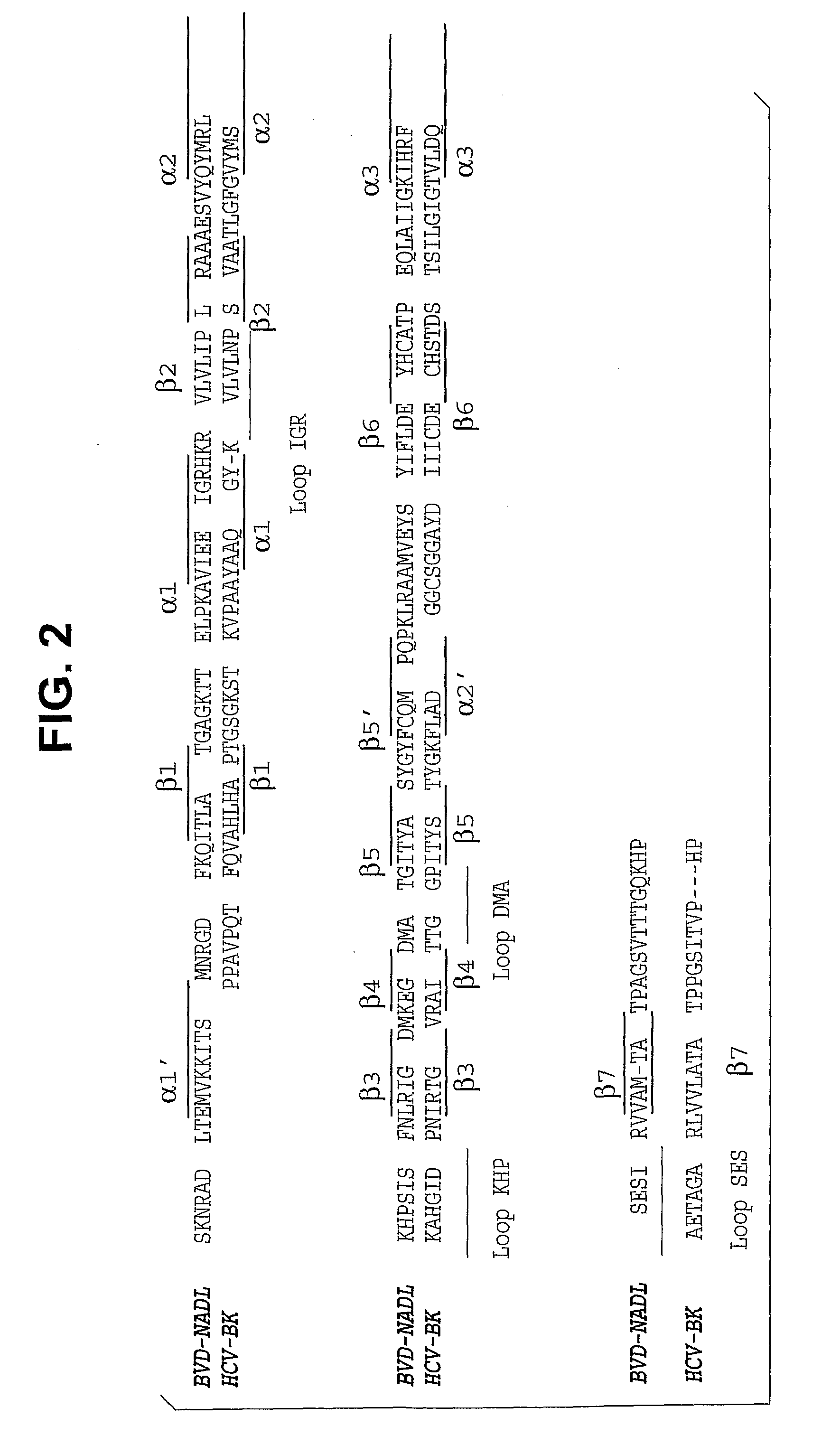Marked Bovine Viral Diarrhea Virus Vaccines
a bovine viral and vaccine technology, applied in the field of bvdv vaccines, can solve the problems of abortion or premature birth, widespread bvdv-related diseases, economic destruction,
- Summary
- Abstract
- Description
- Claims
- Application Information
AI Technical Summary
Benefits of technology
Problems solved by technology
Method used
Image
Examples
example 1
Epitope Mapping of NS3 Domains
[0146]An epitope mapping method was applied to identify the specific epitopes recognized in the NS3 protein by a panel of mAbs. The method entails PCR amplification of each test fragment, followed by translation of the truncated protein in vitro, and finally testing of its reactivity with various mAbs. To preliminarily identify antigenic regions on NS3, a set of seven DNA fragments representing the region were amplified (FIG. 1). Each fragment contained at its 5′ end a T7 promoter followed by an initiation codon, and a stop codon at the 3′ end. These DNA fragments were used as template for the generation of S35-labeled protein fragments by in vitro transcription / translation using the TnT® Rabbit Reticulocyte Lysate System (Promega; Madison, Wis.) and radio-labeled methionine and cysteine. The resulting translated protein fragments included full-length NS3 protein, helicase, and protease, as well as individual subdomains of the helicase. (The boundaries ...
example 2
Sequence Alignment of BVDV and HCV Helicases
[0148]In order to generate a marked virus based on a mutation within domain 1 of the BVDV helicase, further refinement of the epitopes within this domain is desirable. It is desirable to delete an immunodominant epitope without significantly altering the function of the helicase. In order to facilitate the identification of candidate epitopes to mutate, a molecular model of the BVDV helicase would be extremely useful. Since the crystal structure of the HCV helicase is known, it can be used as a template for modeling. To begin the process of generating a molecular model of domain 1, the amino acid sequences of domain 1 of the BVDV and HCV helicases were aligned. The primary sequence identity between them is about 34%. To elucidate the secondary structure of the BVDV helicase domain 1, 47 NS3 sequences derived from various BVDV isolates and other pestivirus were aligned using the Pileup program from the Genetics Computer Group software packa...
example 3
Location of mAb Binding Sites by Scanning Mutagenesis
[0149]To further define epitopes in domain 1 bound by various mAbs, a scanning mutagenesis method was employed. Briefly, short segments of the BVDV helicase domain 1 sequence (SEQ ID NO. 20) were replaced with the corresponding HCV sequence (SEQ ID NO 21) using PCR amplification, followed by restriction enzyme digestion and ligation of the resulting fragments, generating the “scanning mutants” indicated in FIG. 4. In vitro transcription and translation, as well as immunoprecipitation, was carried out as described in Example 1. A summary of reactivity of the various mAbs with the mutants is shown in Table 2.
TABLE 2Reactivity of Scanning Mutants with mAbsmAbsScanScanScanScanScanScanScanHelicase1.11.3++−++−−−++++++21.5.8++−+ / −−+ / −++++++++24.8+++−−−+ / −+++++++20.10.6+++++++++++++++++++++++++Poly++++++++++++++++++++++++++++serumCA72−−−−−−−−negativ
PUM
| Property | Measurement | Unit |
|---|---|---|
| Volume | aaaaa | aaaaa |
| Volume | aaaaa | aaaaa |
| Volume | aaaaa | aaaaa |
Abstract
Description
Claims
Application Information
 Login to View More
Login to View More - R&D
- Intellectual Property
- Life Sciences
- Materials
- Tech Scout
- Unparalleled Data Quality
- Higher Quality Content
- 60% Fewer Hallucinations
Browse by: Latest US Patents, China's latest patents, Technical Efficacy Thesaurus, Application Domain, Technology Topic, Popular Technical Reports.
© 2025 PatSnap. All rights reserved.Legal|Privacy policy|Modern Slavery Act Transparency Statement|Sitemap|About US| Contact US: help@patsnap.com



